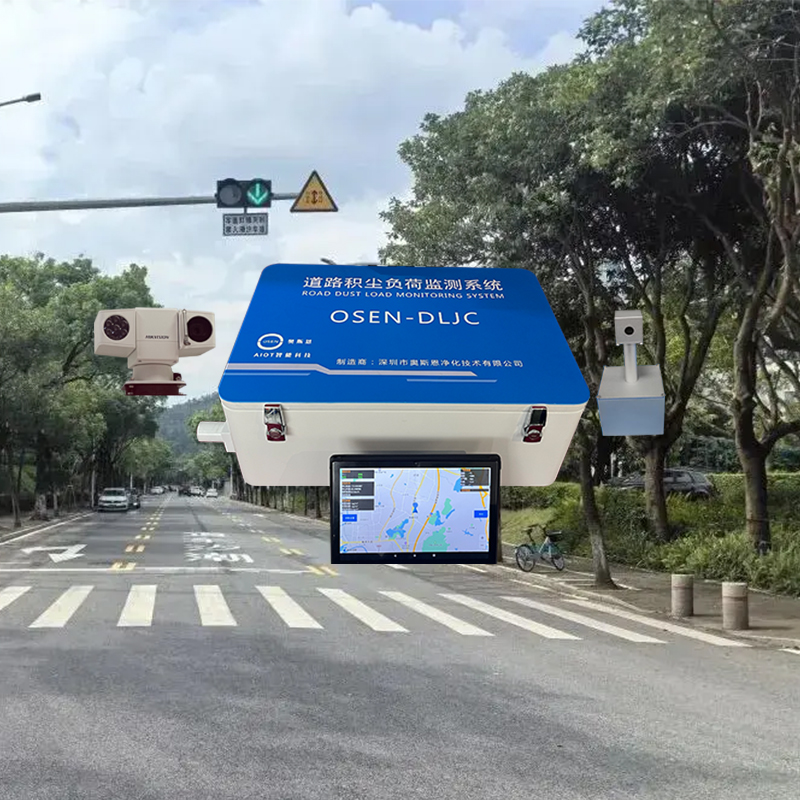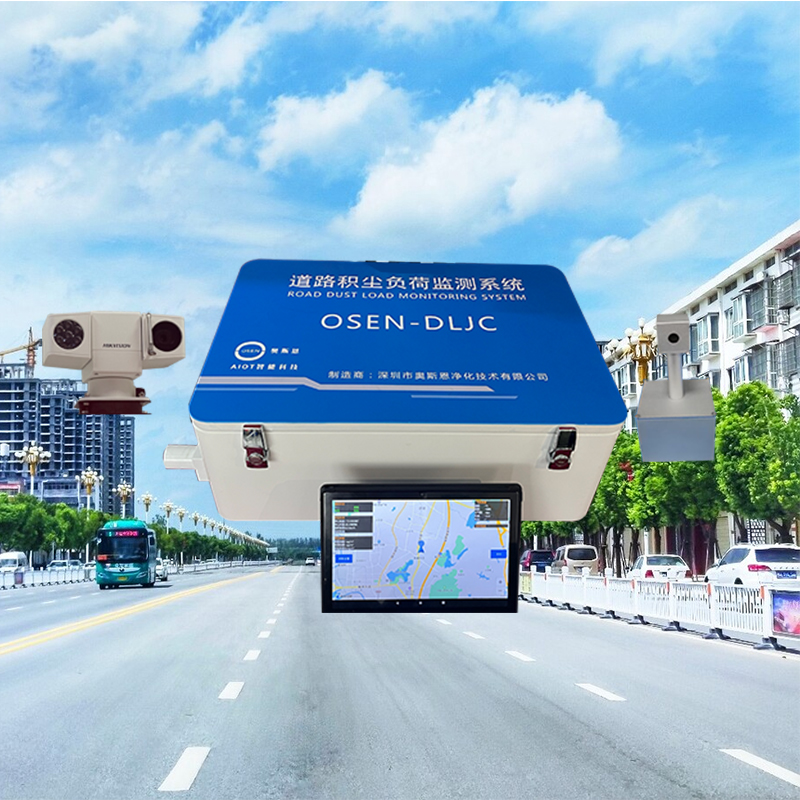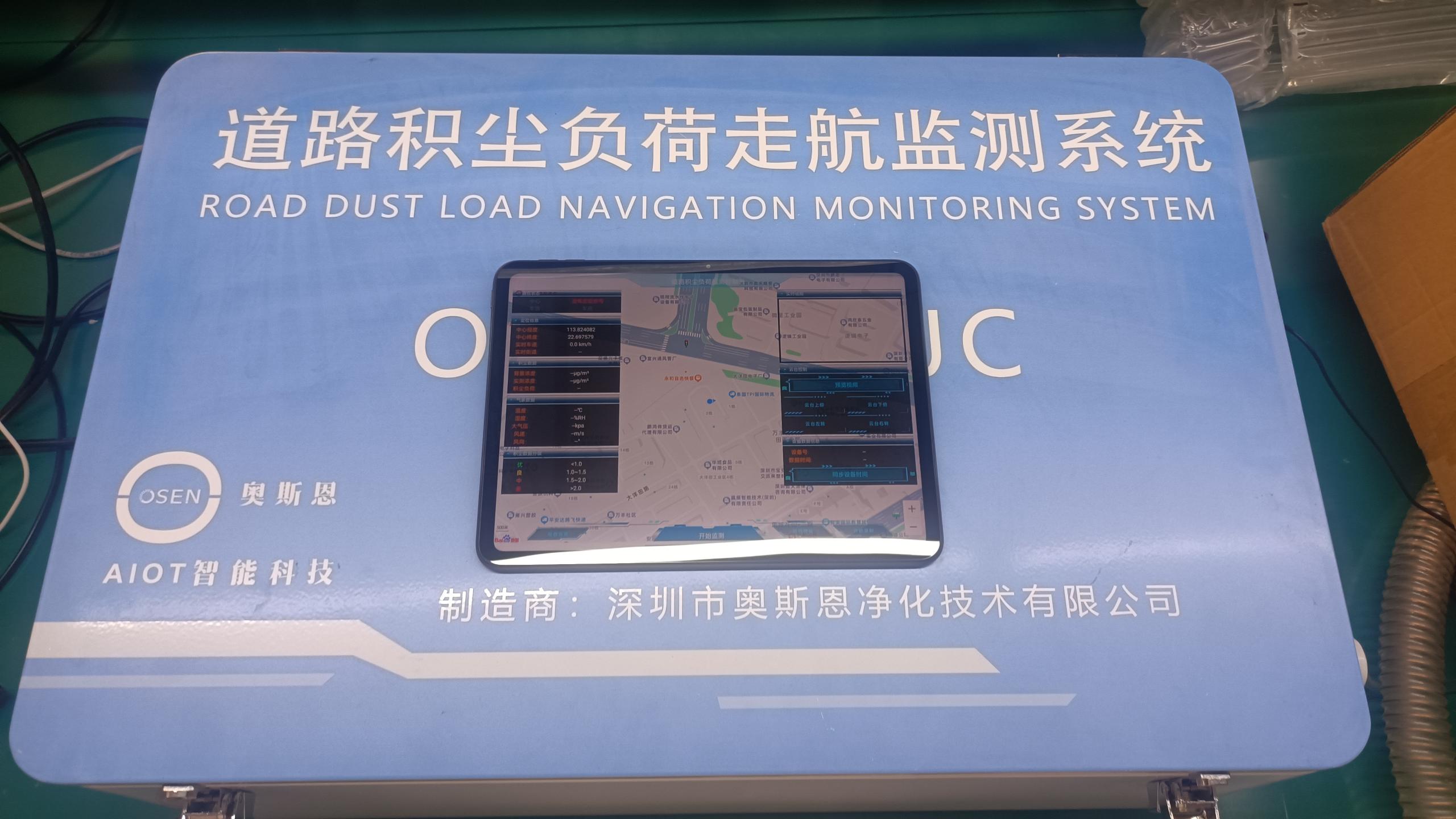Background of using the road dust load navigation monitoring system
In recent years, with the acceleration of urbanization and the continuous growth of motor vehicle ownership, road dust has become one of the important sources of urban atmospheric particulate pollution. Traditional road dust monitoring relies on manual sampling and fixed-point detection, which is not only inefficient and has limited coverage, but also difficult to reflect the dynamic dust accumulation status of the road in real time, and cannot accurately locate high pollution road sections. In addition, the diverse types of urban roads and significant differences in traffic flow, coupled with complex variations in dust load on different road sections, pose significant challenges to environmental regulation and governance. In this context, the road dust load navigation monitoring system has emerged. The system uses a vehicle mounted mobile monitoring platform, combined with advanced technologies such as LiDAR and sensor arrays, to achieve rapid, dynamic, and full section scanning of urban road dust load, providing scientific data support for fine dust control, optimized scheduling of environmental sanitation operations, and air quality improvement on urban roads.

Overall construction plan
The rapid monitoring of dust accumulation load on urban roads using a vehicle mounted road dust detection system is adopted to monitor the road dust data generated during vehicle driving. Through big data algorithms, the dust situation on the road surface is calculated, and the traffic dust emission factor of the road is calculated based on the speed and weight of the vehicle, providing potential dust emission statistics for various road sections in the city. Not affected by factors such as time and space environment, it can query monitoring points and cruise trajectories of the navigation monitoring system, monitor and output data at any time, and organize the data into reports through system calculations. It can support export and other services, making it simple and efficient.

Product Introduction
The road dust load monitoring system is mainly used to monitor the dust accumulation on the road surface in real time and accurately, providing data support for urban environmental management, road cleaning and maintenance. The system mainly consists of dust load sensors, meteorological sensors, high-definition cameras, sampling systems, positioning systems, operation tablet terminals, data transmission modules, power supply systems, data processing software, etc.

Hardware equipment composition
Dust load sensor
As one of the core components of the system, the dust load sensor adopts advanced laser scattering technology, which can accurately sense and measure the dust accumulation on the road surface. It monitors the dust accumulation on the road surface in real time, converts the physical quantity of dust accumulation into electrical or digital signals, and accurately reflects the load situation of road dust accumulation.
meteorological sensor
Meteorological conditions have a significant impact on the distribution and diffusion of road dust. Meteorological sensors can monitor various meteorological parameters in real-time, including but not limited to wind speed, direction, temperature, humidity, air pressure, and rainfall. By collecting and analyzing these meteorological data, we can gain a deeper understanding of the relationship between meteorological factors and road dust accumulation.
Hd camera
High definition cameras play an important auxiliary role in road dust load monitoring systems. It can capture real-time images of road surfaces, clearly recording information such as road dust accumulation, vehicle driving conditions, and surrounding environment. By analyzing the images captured by the camera, it is possible to intuitively observe the distribution area of road dust accumulation, changes in dust thickness, and the presence of special dust sources. In addition, high-definition cameras can also be used to monitor the effectiveness of road cleaning operations, providing a visual basis for evaluating the quality of cleaning work.
sampling system
The sampling system is responsible for scientifically and systematically collecting dust on the road surface. It can sample road dust at different road sections and time points according to predetermined sampling rules and methods. The collected dust samples can be further analyzed in the laboratory to determine detailed information such as the composition and particle size distribution of the dust.
positioning system
The positioning system adopts high-precision satellite positioning technology, such as GPS or Beidou positioning system, which can accurately determine the geographical location of monitoring equipment. By obtaining real-time latitude and longitude information of monitoring points, the road dust load data is associated with specific geographical locations, making the monitoring data have clear spatial attributes.
Operating tablet terminals
The tablet terminal provides a convenient and intuitive operating interface for system operators. Operators can view real-time road dust load data, meteorological data, and images captured by cameras through tablet terminals. At the same time, various operations can be performed on the tablet terminal, such as setting monitoring parameters, starting or stopping the sampling system, viewing historical data records, etc.
Data transmission module
The data transmission module is responsible for quickly and stably transmitting the data collected by various sensors and devices to the data processing center. It supports multiple data transmission methods, including wired transmission (such as Ethernet) and wireless transmission (such as 4G, 5G, Wi Fi, etc.). According to different application scenarios and requirements, appropriate data transmission methods can be selected to ensure timely and accurate data transmission.
power supply system
The power supply system is an important foundation for ensuring the normal operation of the road dust load monitoring system. It provides stable power supply for various devices in the system, ensuring that dust load sensors, weather sensors, high-definition cameras, sampling systems, and other equipment can work continuously and reliably.
Data processing software
The data processing software is the brain of the road dust load monitoring system, which deeply processes and analyzes the large amount of data transmitted. This software can integrate and analyze dust load data, meteorological data, image data, etc. By establishing scientific mathematical models and algorithms, accurate road dust load indicators can be calculated. At the same time, data processing software also has functions such as data storage, querying, statistical analysis, and report generation. It can present the analysis results in intuitive forms such as charts, reports, etc., providing decision support for urban environmental management departments, road cleaning and maintenance departments, and helping them develop more scientific and reasonable management and maintenance plans.

Keyword:





